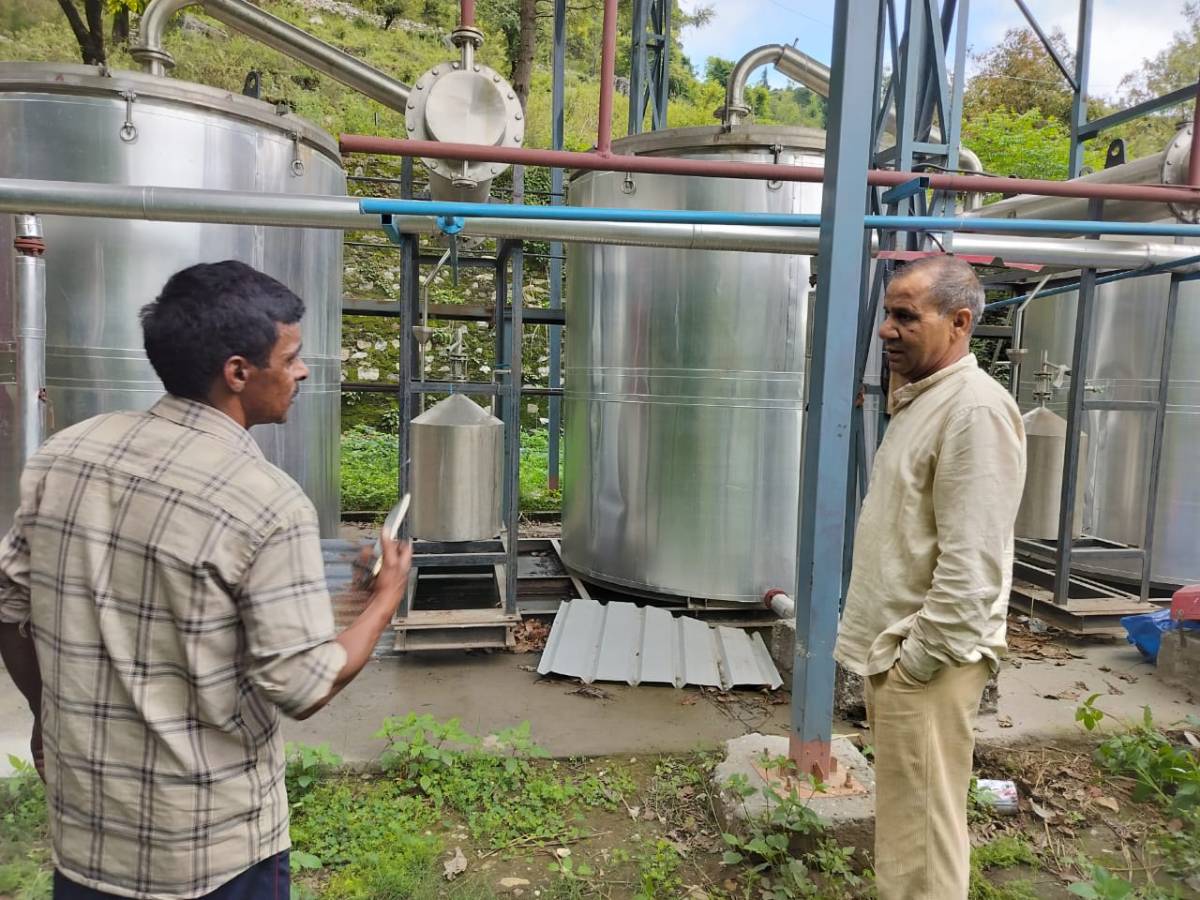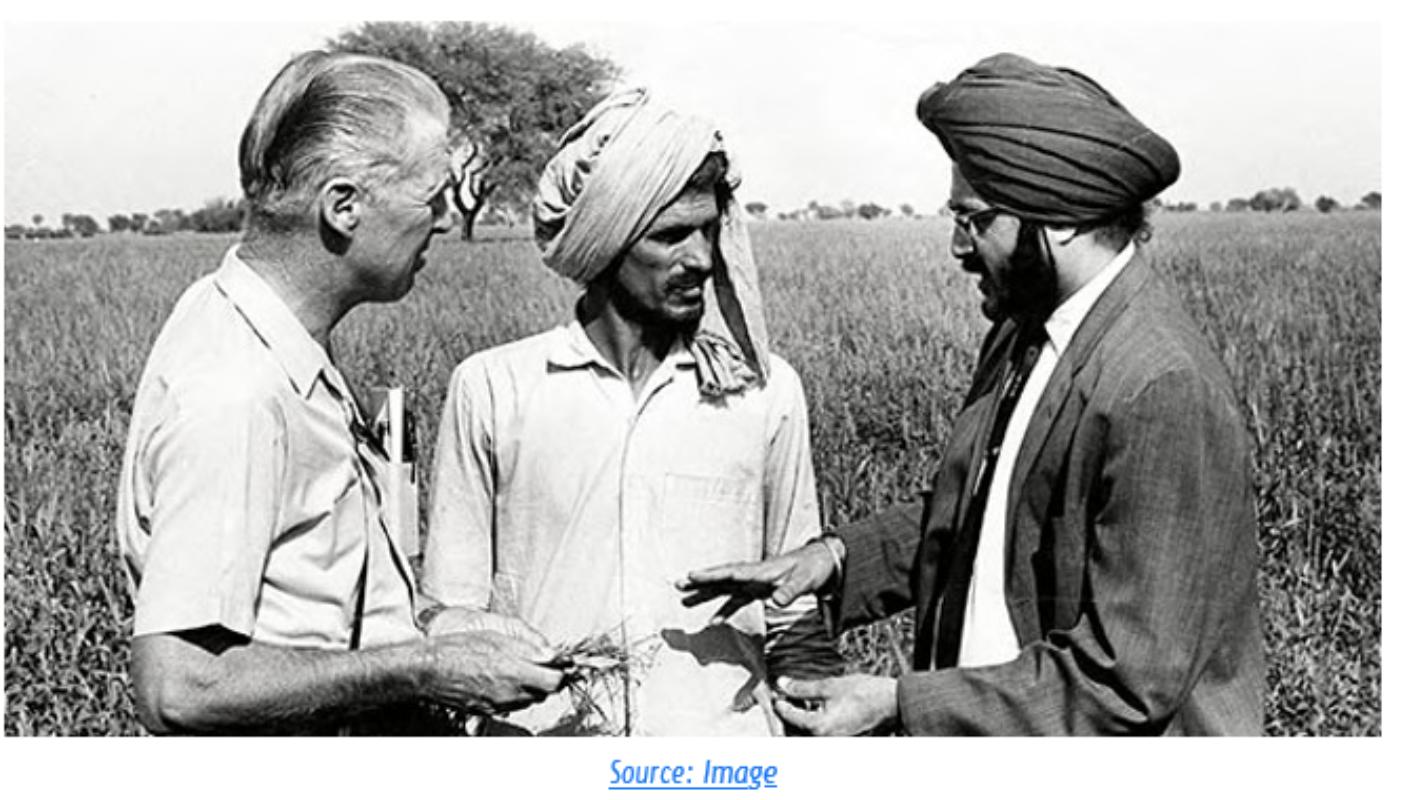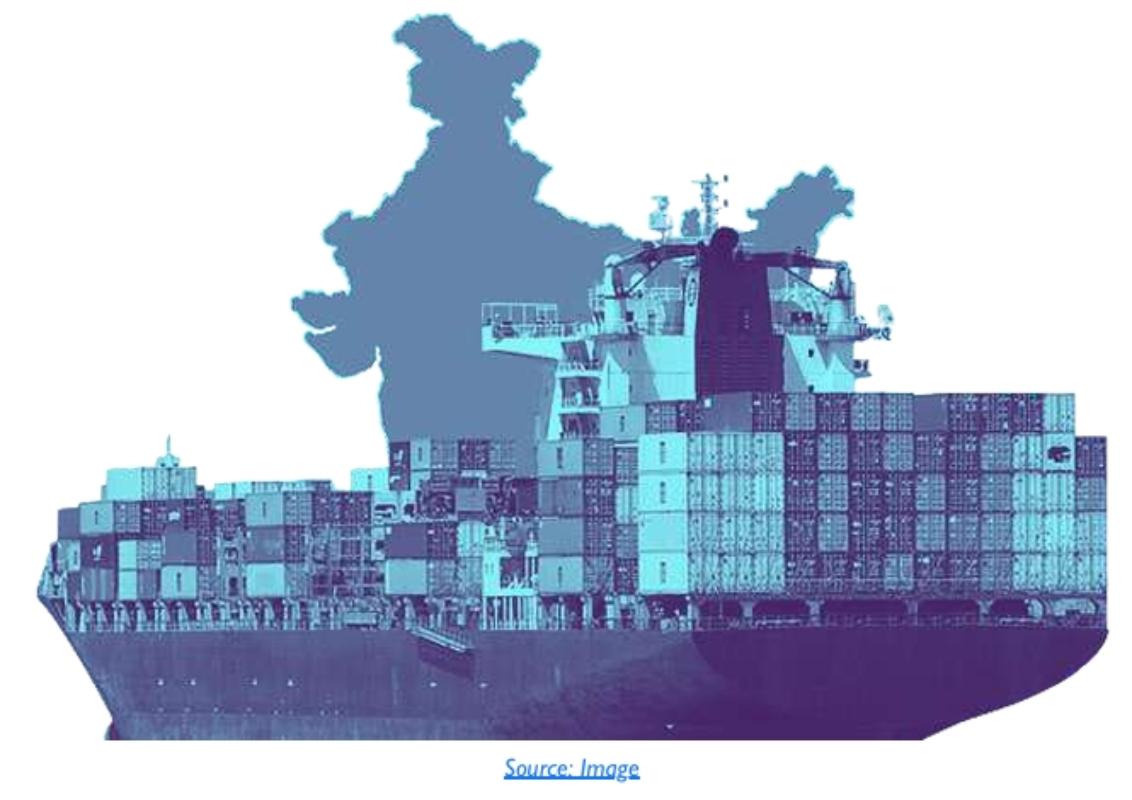Introduction
Although 45% of jobs in India are in agriculture and allied sectors, most non-agricultural employment is generated in the unincorporated sector enteprises. Therefore, it is essential for the government to adopt growth oriented policies for this sector, commonly referred to as micro, small and medium enteprises (MSMEs). However, while efforts have focused on supporting crores of microenterprises, India has overlooked millions of small enterprises that offer higher growth and employment potential.
In the Economic Survey 2025, the unincorporated MSME sector received limited attention, presenting an opportunity for greater engagement at the policy level. One of the few MSME-related highlights in the Economic Survey is the Self-Reliant India (SRI) Fund, positioned as an equity funding initiative with a ₹50,000 crore corpus (₹10,000 crore from the government and ₹40,000 crore from private equity and venture capital). However, in practice, these funds primarily channel investments into venture capital (VC) and private equity (PE) firms, which target high-growth startups in sectors like healthcare, agritech, and climate tech, leaving millions of micro-enterprises underfunded and overlooked.
The Budget 2025 has prioritized increasing consumption spending, yet sustainable consumption growth is only achievable if the country generates more jobs. The Budget introduced a ₹5 lakh customized credit card for micro-enterprises registered on the Udyam portal, with a first-year issuance target of 10 lakh credit cards. This initiative represents a small but positive step toward flexible financing for unincorporated enterprises.
However, two key limitations must be addressed: firstly, a loan remains a loan—unless the financial instrument is linked to business cashflows, it does not provide the risk capital essential for startups and high- growth enterprises. Secondly, the target of 10 lakh enterprises represents just 1.36 percent of India’s total unincorporated sector enterprises – as per the Annual Survey of Unincorporated Sector Enterprises (ASUSE) 11 2023-24, there were 7.34 crore unincorporated enterprises, indicating the limited reach of the initiative.
This paper argues that India must move beyond tinkering with loan schemes and adopt flexible finance models to address the capital constraints faced by unincorporated enterprises. Traditional loans, even with relaxed terms, fail to accommodate cashflow variability and market-driven revenue fluctuations— two fundamental realities of small enteprise operations. The solution lies in revenue-based and profit- sharing financial instruments that adapt to business cycles, offering risk-sharing mechanisms that align financial sustainability with entrepreneurial success.
In the spirit of movng forward, this paper goes beyond a critique of existing policies and products and presents a more effective growth stratgey for this sector. Instead of focusing on 6.34 crore Own Account Enterprises (OAEs), which constitute 86.4% of total enterprises in the unincorporated sector in India, India must formulate policies to target a distinct, smaller subset—1 crore Hired Worker Enterprises (HWEs). These HWEs, which account for 13.6% of the 7.34 crore enterprises in the unincorporated sector, should receive capital and other forms of support to facilitate their growth and scalability. This approach will ensure a sectoral transition from OAEs to HWEs, leading to higher employment generation, increased output, and improved productivity and earnings.
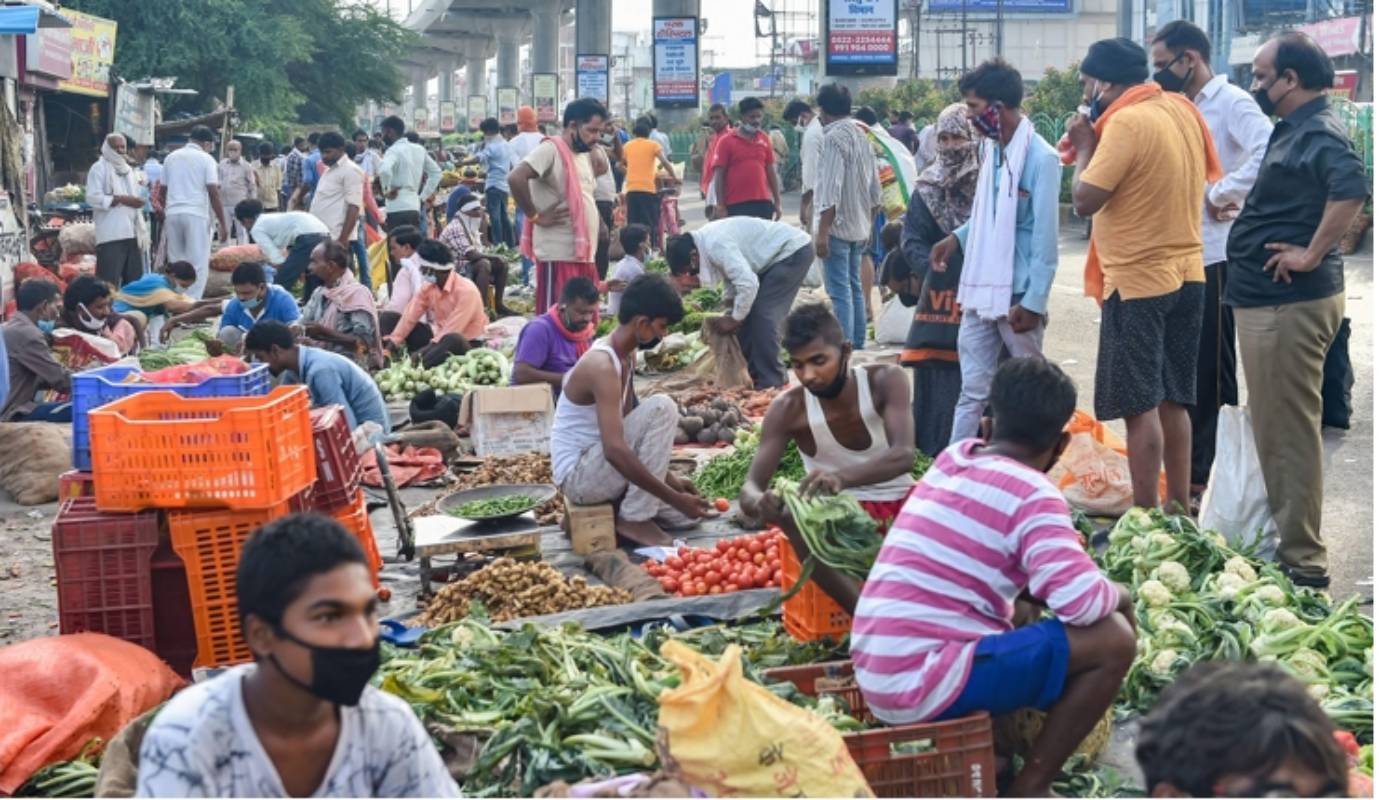
We also outline the most suitable financing mechanism for HWEs—Flexible Financing with Repayment based on Cashflows (FFRC). This approach ensures repayment structures align with enterprise cash flows, offering the financial flexibility necessary for sustainable growth.
Unincorporated Sector Enterprises – OAEs and HWEs
The Annual Survey of Unincorporated Sector Enterprises (ASUSE) segments the enterprises in unincorporated sector into two categories: Own Account Enterprises (OAEs) and Hired Worker Enterprises (HWEs). According to the ASUSE 2023-24, there are 7.34 crore unincorporated enterprises in India, out of which 6.34 crore are OAEs and 1.0 crore are HWEs.
Own Account Enterprises (OAEs) in unincorporated sector are typically operated by the owner, often assisted by a family member. With modest investments ranging from ₹50,000 to ₹2,50,000, these enterprises play a crucial role in providing self-employment at a subsistence level to millions. According to ASUSE 2023- 24, India had 6.34 crore OAEs, employing 7.65 crore workers—an average of 1.2 workers per OAE, comprising the owner and, occasionally, a part-time family worker.
As per ASUSE 2023-24, only 31% of OAEs operate from permanent structures, reflecting their informal nature. With an annual average output of ₹2.62 lakh, most OAEs function as mom-and-pop “kirana” shops or food stalls. Owners in this category often exhibit low growth aspirations,prioritize immediate earnings, and are risk-averse, making them less inclined to adopt innovations. They typically target hyperlocal markets, engaging in trade with minimal value addition.
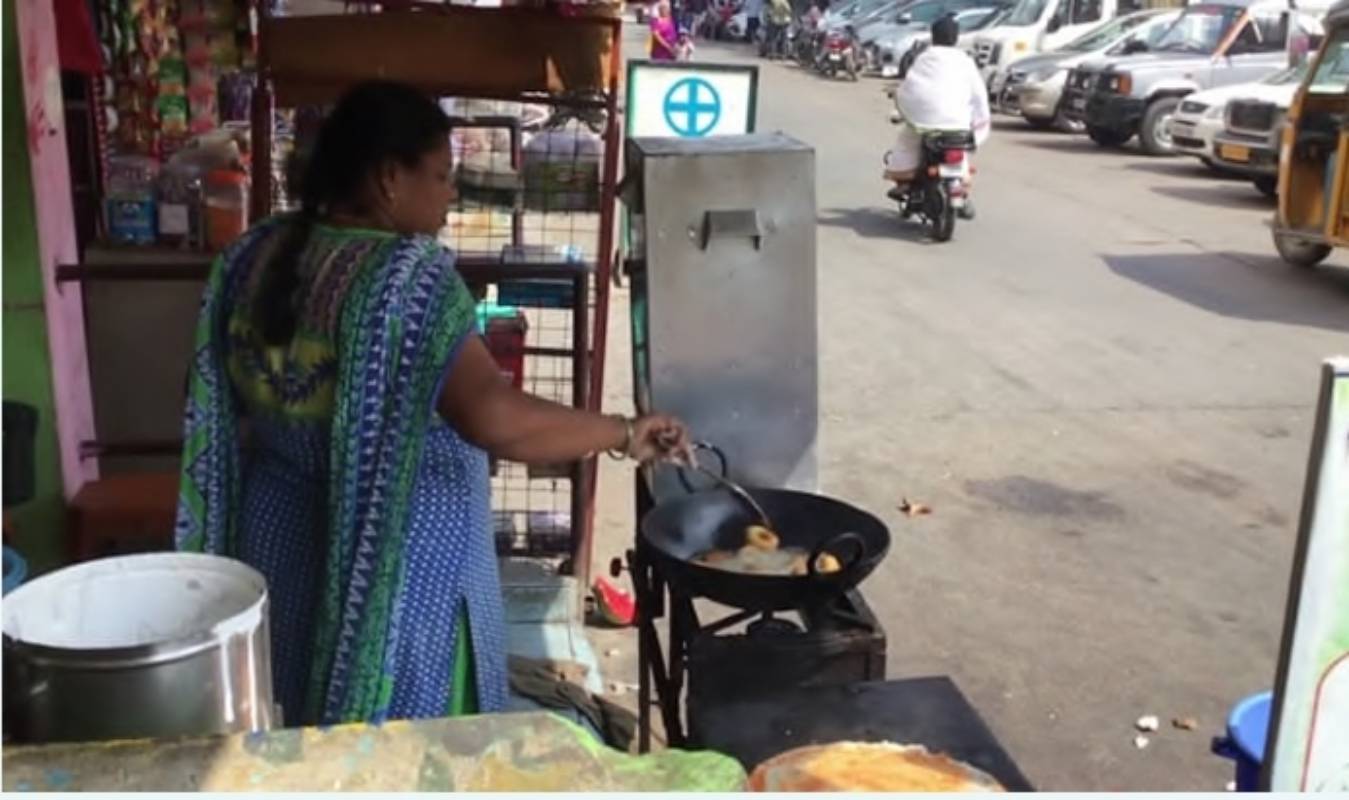
The enormous growth of the microfinance sector over the last two decades has ensured that this OAEs are well-financed. According to the Microfinance Institutions Network (MFIN), as of September 30, 2024, there were 14.1 crore microfinance loans outstanding across 8.1 crore unique borrowers, totalling ₹4.08 lakh crore
—with an average loan size of ₹50,370 per borrower.
Since microfinance loans cater to agriculture, animal husbandry, housing, and non-farm micro-enterprises, not all of this financing is directed at OAEs. However, the data suggests that OAEs have ample access to credit. In fact, a new problem has emerged—over-lending. An excessive number of micro-lenders are now competing for borrowers, leading to a surge in loan delinquency issues across multiple states. As we write this paper, the microfinance industry is experiencing a historic non-performing asset (NPA) crisis. According to Business Standard (January 17, 2025):
“Credit information bureau CRIF-Highmark data indicates that in Q2 FY25 (September 2024), delinquencies increased across all Days Past Due (DPD) bands. DPDs measure how many days a borrower is late on loan payments. Delinquencies spiked across all loan sizes and lender types— including universal banks, small finance banks, and NBFC-MFIs. The 31–180 day DPD level rose from 2.2% in September 2023 to 4.8% in September 2024.”
Thus, from perspective of employment, GDP growth, and financial stability, the focus should shift to Hired Worker Enterprises (HWEs), which we discuss in the box below. 12, 13
Hired Worker Enterprises (HWEs) in unincorporated sector, typically operate in large villages, small towns or district towns. As per ASUSE 2023-24, 1 crore HWEs employed 4.41 crore workers, averaging 4.4 workers per enterprise, or 3.4 hired workers excluding the owner. With investments typically ranging from ₹5 lakh to ₹25 lakh, these enterprises play a crucial role in the economy.
However, despite their significant contributions, HWEs remain heavily underfunded. These businesses often rely on bank financing for working capital while using their own resources for fixed capital investments, leaving a significant gap in their ability to scale effectively. Their operations span higher-order aggregation, trading, distribution, medium to large-scale services, and primary and secondary processing, all of which demand substantial infrastructure such as shops, buildings, transport, and machinery.
As per ASUSE 2023-24, 85.4% of HWEs operate out of permanent structures. The average market value of land owned by HWEs is ₹10.0 lakh with fixed assets valued at ₹11.59 lakh, and total fixed assets, including hired ones, reaching ₹19.39 lakh. Despite this strong asset base, the average loan outstanding per enterprise is just ₹2.73 lakh—an amount that represents a modest 27.3% of land value, 23.6% of owned fixed assets, and 14.1% of total fixed assets. This low borrowing-to-asset ratio reflects a systemic under-leveraging of their fixed assets.
The loan outstanding and asset ownership data in ASUSE 2023-24 reveals that HWEs are severely underfunded. The credit requirement per HWE ranges from ₹10 lakh to ₹20 lakh, averaging ₹15 lakh, resulting in a sector-level credit gap of approximately ₹15 lakh crore for about 1 crore HWEs.
HWEs embody the aspirations of grassroots entrepreneurs who drive regional markets—often with limited capital, resources, and institutional support. Despite their importance, these enterprises struggle with severe financial constraints, leaving them unable to scale or compete effectively.
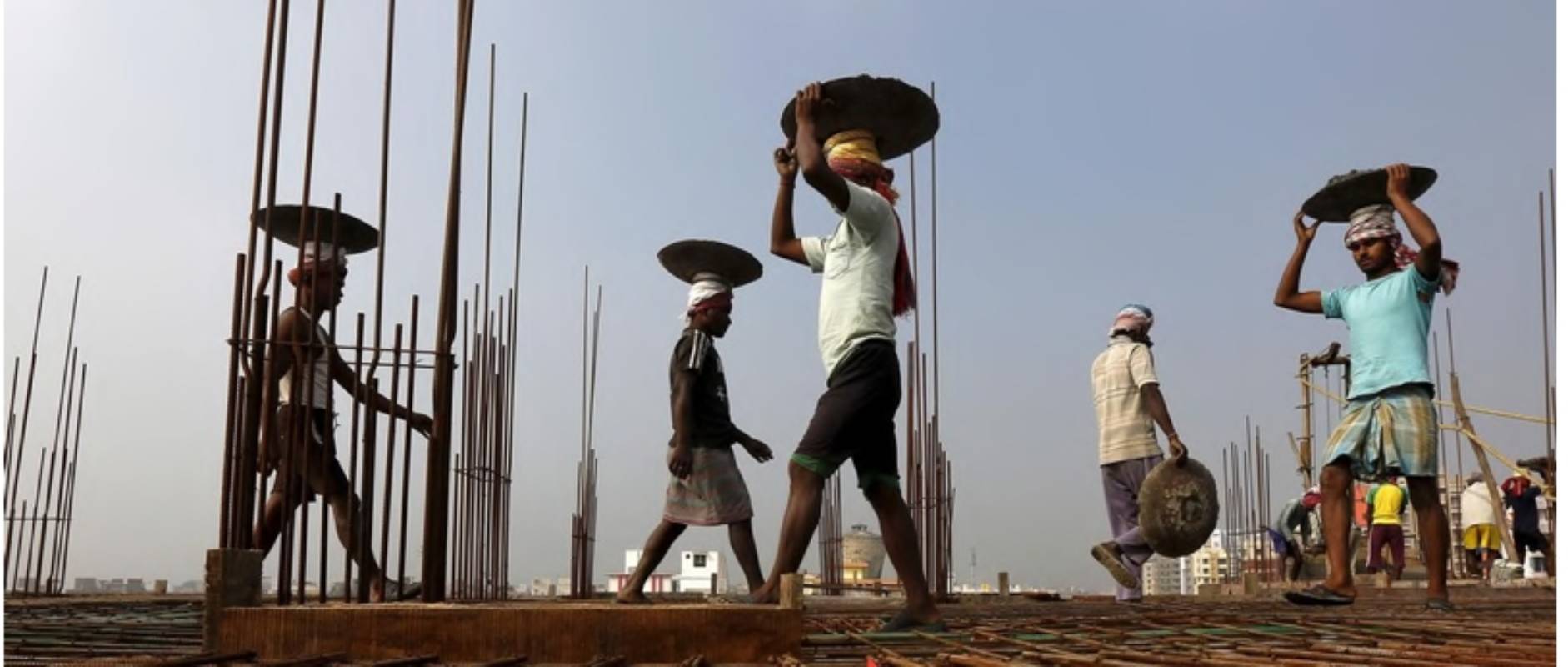
Three case studies on how financing constrains or unlocks the growth potential of HWEs
The stories of Mira, Sathyalakshmi, Aakash, and Rehan illustrate both the entrepreneurial potential of this sector and the systemic barriers that hinder growth. From Mira’s determination to build a regional organic oil brand, to Sathyalakshmi and Aakash’s resilience in identifying a market gap, to Rehan’s persistence in rebuilding his business after bankruptcy—each case highlights the challenges of accessing capital and navigating an ecosystem where rigid financial models and systemic mistrust persist.
Case study 1: Rehan – An aspiring entrepreneur achieves local success
Rehan, a former construction worker in Japan, returned to India with dreams of entrepreneurship. Starting in the real estate sector with no prior experience, he faced setbacks, loss and significant financial challenges. Determined to pivot, Rehan launched a kids’ clothing business in Hyderabad (Telangana), which gained early success. Rehan found unwavering support from his wife in managing operations of their kids’ clothing wholesale trading business. However, the COVID-19 pandemic brought his business to a halt, leaving him bankrupt.
Despite owning assets worth ₹3.2 lakh—including land (₹1.5 lakh) and fixed assets (₹1.7 lakh)—Rehan struggled to secure adequate financing from traditional lenders. A microfinance institution offered his wife a joint liability group (JLG) loan of ₹15,000, which fell far short of their business needs. With his business capable of achieving ₹2.50 lakh in sales turnover, Rehan rightfully deserved a minimum of ₹2.50 lakh loan based on ₹50,000 for working capital (20% of turnover) and ₹2 lakh for fixed capital (at least 60% of fixed assets and land). Considering the growth potential of his business, Rehan needed ₹2.50 lakh for working capital and ₹2.50 lakh for fixed capital, totalling ₹5 lakh.
The Intervention
Rehan’s breakthrough came when the IIMA Ventures-incubated Micro-Equity Fund provided him with ₹5 lakh in Flexible Financing with Repayment based on Cashflows (FFRC) four years ago. This innovative financing model, structured as a profit-sharing arrangement, allowed Rehan to align repayments with his business cashflows, unlike rigid EMI-based loans. This flexibility reduced financial strain during uncertain times, enabling him to focus on rebuilding and scaling his business.
Impact of Flexible Finance
The flexible finance model proved transformative for Rehan’s business:
- Business growth: Rehan now achieves a monthly sales turnover of ₹3 lakh to ₹4 lakh reflecting consistent
- Household stability: His family enjoys a stable monthly income of ₹40,000 to ₹60,000, ensuring financial
- Impressive returns for lenders: The profit-sharing model delivered over 18% annual IRR for the Micro Equity Fund over four years, proving effective flexible financing.
The Road Ahead
Encouraged by his recovery, Rehan is now planning to scale his operations from hyperlocal to a city-wide level. While not overly ambitious or driven by high aspirations, Rehan and his wife aim to continue operating at the local market level. By maintaining limited storage and limited value addition, they intend to keep risks low while steadily growing their business.
Case Study 2: Sathyalakshmi & Aakash – from financial hurdles to success
Sathyalakshmi, originally from Sangareddy, Telangana, gained hands-on experience in tailoring and apparel stitching while apprenticing with her mother for three years. Her husband, Aakash, ran a retail outlet for second-hand sewing machines and ancillary units. Together, the husband-wife duo possessed complementary skills that laid the foundation for their entrepreneurial journey.
As the COVID-19 pandemic unfolded, they identified a surge in demand for masks as a market opportunity. However, instead of entering mask production like many others, they saw a larger gap in the market—a shortage of sewing machines and ancillary parts in Sangareddy district.
The Startup Phase
To address this demand, they partnered with Usha, a leading sewing machine manufacturer, to distribute sewing machines locally. However, Usha could not supply sewing machine oil, a critical component for smooth machine functioning, due to supply chain constraints. To fill this gap, Sathyalakshmi and Aakash decided to invest in manufacturing sewing machine oil.
They required ₹5 lakh to start their business: ₹3 lakh for machinery and working capital to produce sewing machine oil, and ₹2 lakh as working capital to act as wholesalers and distributors of Usha sewing machines.
Challenges Faced
With savings of only ₹50,000 and Aakash’s retail assets worth ₹4 lakh, they approached multiple banks under the Prime Minister’s Mudra Yojana (PMMY) for a loan of ₹5 lakh. Despite Aakash’s five years of business experience, their loan application faced numerous obstacles:
- Bribes and bureaucratic hurdles: One bank demanded a bribe to process the loan, while others insisted on collateral.
- Lack of awareness of PMMY: Two banks did not even recognize the Mudra scheme, causing further
- Lost opportunity: As their loan pursuit dragged on for six months, a competitor emerged in a neighbouring district, attracting customers and threatening their market position.
Despite these setbacks, the couple remained undeterred. They were determined to establish the sewing machine distribution and oil manufacturing business to meet unmet local demand.
The Intervention
In late 2022, after exhausting traditional financing options, Sathyalakshmi and Aakash approached the IIMA Ventures-incubated Micro-Equity Fund. The fund assessed their entrepreneurial potential and provided ₹5 lakh in flexible financing. The financing included ₹3 lakh for fixed assets and ₹2 lakh for working capital. Unlike rigid EMI loans, the repayment structure was linked to their monthly business profits, reducing financial strain and aligning with their cashflow variability.
Impact of Flexible Financing
By 2023, the couple had successfully set up their sewing machine oil manufacturing unit and became the largest wholesale distributor of sewing machines in Sangareddy district. Their business achieved:
- Sales turnover: ₹38 lakh in annual Employment creation: Three hired workers.
- Community impact: Training local women in sewing machine operations, contributing to skill development and livelihood generation.
The Road Ahead
Having established a successful operation, Sathyalakshmi and Aakash now plan to expand their distribution network to neighbouring districts and introduce additional sewing machine accessories. With continued access to flexible financing, they aim to achieve greater scalability and contribute to regional economic growth.
Case study 3: Mira – A high-aspiration entrepreneur’s journey is held up
Background
Mira’s ambition is to transform her agri-food processing business into a regional brand, manufacturing organic oils such as groundnut, sesame, and coconut oils in Anantapur, Andhra Pradesh. However, Mira’s journey has been far from easy. As a woman entrepreneur from an underprivileged community (backward caste) operating within the informal economy, she has faced numerous systemic and social challenges. These factors amplify her risk profile compared to entrepreneurs from more privileged backgrounds, placing her metaphorically “several laps behind” in the entrepreneurial race.
Challenges Faced
Mira’s disadvantages manifest in the following ways:
- Disproportionately high time value of money: For Mira, immediate access to funds holds significantly greater importance than delayed gratification, especially compared to a privileged entrepreneur. This is due to financial pressures stemming from unemployment, inflation, low-income activities, and the responsibility of supporting multiple dependents.
- Lack of social conditioning, resources and network: Unlike entrepreneurs from business-oriented communities such as Marwari, Chettiar, and Parsi1,4 Mira lacks inherited business acumen, financial support from a close network, and community connections that could provide mentoring and access to opportunities.
The Startup Phase
Venturing into the organic oil manufacturing sector, Mira needed ₹25 lakh to start her business—₹15 lakh for machinery and infrastructure and ₹10 lakh for working capital. Despite owning assets worth ₹22.07 lakh, including land (₹10.72 lakh) and fixed assets (₹11.35 lakh), Mira struggled to secure adequate financing. A local bank offered her a loan of just ₹2.4 lakh, forcing her to purchase only one second-hand machine and operate with minimal working capital, leaving her in a precarious position.
Despite these hurdles, Mira displayed remarkable financial discipline: She maintained accurate books of accounts using computerized systems. She operated from a permanent structure with dedicated space for factory operations, storage, and packaging. She leveraged technology, including CCTV, barcode scanners, RFID tags, and MIS systems, to streamline inventory management and operations. She utilized digital payment platforms (UPI, POS, payment gateways) for supplier payments and customer transactions. Finally, Mira registered on the Udyami portal and with GST, filing returns regularly. Her disciplined approach earned her the title “Queen of Business,” a testament to her resilience and entrepreneurial acumen.
The Road Ahead
Mira continues to seek ₹25 lakh in financing to scale her business regionally and diversify her product line. This includes: ₹10 lakh for working capital: To ensure smoother operations and manage seasonal variations in demand. ₹15 lakh for fixed capital: To invest in modern machinery and expand infrastructure, enabling greater efficiency and capacity. Mira’s ambition is to compete with larger players in the organic oil market while creating employment and driving local economic growth.

Diagnosing the causes for the gap: Why HWEs are short of funds
The issue of inadequate financing or lack of financing for HWEs can be attributed to three key barriers:
- Borrower characteristics: A significant gap between perceived risk and actual risk deters
- Lender preferences: A significant gap between the intent of financiers and policymakers and field-level execution limits financiers.
- Mismatch between demand and product: A significant gap between the financing needs of enterprises and available financial products leaves opportunities unaddressed.
Borrower Characteristics: How risk perception keeps financiers at bay
The persistence of the underfunding problem can largely be attributed to a mismatch between the perceived risks and actual risks associated with enterprises in the unincorporated sector.
Perception of High Risk and Limited Growth Potential:
The high-risk perception associated with HWEs, stems from their perceived vulnerability to failure, with nearly half expected to close within their initial years. For financiers, especially local rural branch managers, the fear of defaults outweighs recognition of entrepreneurial potential. This focus on minimizing defaults and maintaining a clean portfolio often leads financiers to avoid experimental or high-risk lending. As a result, collateral becomes a prerequisite for credit, leaving small businesses without security marginalized in favour of larger MSMEs with established credit histories.
Additionally, there is a pervasive belief that small businesses lack the capacity for significant growth, often stagnating or failing instead of scaling into more profitable ventures. Such assumptions reinforce the perception that these enterprises cannot generate competitive, risk-adjusted returns. This narrative unfairly dismisses the growth potential of HWEs, which, driven by entrepreneurial ambition, frequently exhibit strong potential for expansion and success.
Perception of Mixing of Household and Enterprise Cashflows:
As most of HWEs are proprietary enterprises, there is often a blending of business and personal expenses. Family emergencies, such as illness or marriage, can divert funds away from the enterprise to meet household needs. This mixing of cashflows creates a shadow of mistrust, promoting a perception of financial mismanagement, and lack of discipline. Traditional credit evaluation frameworks of institutional lenders, based on collateral and historical financial data, therefore exclude entrepreneurs operating in informal economies with mixed and irregular cash flows. The high use of cash rather than bank accounts also discouraged many formal lenders to lend to HWEs.
Opacity of Cashflows:
Data from ASUSE 2023-24 reveals that only 5.7% of HWEs maintain audited accounts. Even among those with audited records, computerized accounting practices are rare. This raises questions and increases the perceived risk: are revenues being under-reported or multiple sets of books being maintained for different stakeholders. Such doubts erode the confidence of potential financiers.
Lender Preferences: Secured loan with fixed repayment schedule
Over the past 50 years, numerous committees, including the Tandon Committee (1975), Nayak Committee (1991), Raghuram Rajan Committee (2008), and RBI Expert Committee on MSMEs (2020), have highlighted the chronic underfunding of MSMEs. They have proposed need-based, cashflow-oriented, and scalable solutions. However, structural challenges—including rigid financial products, risk-averse behaviours, misaligned targeting, and operational inefficiencies—have hindered institutional lenders from effectively addressing the financing needs of MSMEs. As a result, despite well-intentioned reforms and schemes, the financing landscape continues to perpetuate a funding shortfall, limiting the ability of MSMEs to grow, innovate, and contribute to economic progress.
Current Lending Practices by Institutions
- NBFC-MFIs: Primarily focus on OAEs through JLG group
- Regular NBFCs: Cater to HWEs with loan-against-property
- Banks: Primarily serve higher-order HWEs (with investments above ₹50 lakh). They only lend to lower-order HWEs and OAEs when obligated under government schemes like PMMY, PMEGP, or PMFME
Limitations of Lenders
- Microfinance is too small for HWEs: Studies indicate that 10-20%16of microfinance clients (mostly OAEs) have the potential to evolve into HWEs, but the MFIs do not have loan products to meet the specific requirements of such enterprises. Typically, OAEs require up to ₹1 lakh, with even the largest OAE rarely needing more than ₹5 lakh. In contrast, HWEs require between ₹10 lakh and ₹20 lakh, partly for fixed investments and partly for working capital.
- Rigid Loan Structures: Microfinance loan products are designed with EMI repayment structure for meeting household needs of the wage-employed and the limited capital needs of those self-employed in OAEs. This repayment structure fails to accommodate the cashflow variability, seasonality, and uncertain startup phases inherent in entrepreneurial ventures.
- Group-Centric Lending Model: Individual loans with joint liability of a group of individual borrowers for each other’s loans is a core feature of microfinance. This reliance on collective accountability is suitable for OAEs only. This concept is not suitable for HWEs with higher growth potential and thus higher capital
- Regular NBFCs Focus Solely on Loan Against Property: Regular NBFCs primarily provide loans against property (LAP), with little consideration for entrepreneurial acumen or business growth potential. This approach means that only those HWE owners who have accumulated surpluses and invested in property can get this type of LAP financing.
- Government Schemes Focus on the Excluded and thus Do Not Select the Most Entrepreneurial: Government welfare schemes are focused on the excluded – women, SCs, STs, the disabled, etc. as they should be. However, when the scheme has a loan component, this focus on the excluded often leads to non- selection of the most entrepreneurial persons in a community, who are most suited to establish or grow
- Complex, Lengthy, and Arbitrary Processes in Banks:17Bureaucratic hurdles, convoluted application procedures, arbitrary rejections, delays, and stringent documentation requirements deter achievement-driven entrepreneurs, who are often time-conscious and resource-constrained, from accessing these schemes.
- Refinancing and Credit Guarantees Focus on Lender Risk: Programs offering refinancing and credit guarantees were designed to mitigate risks for lenders rather than reduce risks for entrepreneurs. Despite guarantees, banks remain reluctant to offer collateral-free loans, citing operational risks, which exacerbates barriers to financing.
Consequences of current limitations
From the days of the Integrated Rural Development Program (IRDP) loans, bankers have learned that loans driven by government mandates or tied to government subsidies of principal or interest rate subventions, lead to poor portfolio performance. Thus, bankers tend to underfinance loans linked to government schemes, for fear of higher NPAs.
To minimise the extra risk and effort, bankers often resort to rebranding outdated loan products under new schemes18instead of pursuing innovative financing solutions. Rigid EMI-based loans fail to accommodate the unique challenges of entrepreneurial ventures, resulting in increased non-performing assets (NPAs) and low returns on investment.
Mismatch between demand and supply in terms of loan size
Between 2015 and 2024, under the PMMY, over 41.16 crore loans were disbursed, totalling ₹22.90 lakh crore. Of these, 68.6% were granted to women, accounting for 41.7% of the total loan amount. Most PMMY loans fall into the Shishu category (≤₹50,000) with an average loan size of ₹27,507 – sufficient only to support lower-end subsistence OAEs. While many individuals use these funds to purchase assets, a significant number fail to engage in productive activities, leading to considerable misallocation of resources.19
The PMMY recognised that there are larger enterprises than micro – the higher-growth and employment generating HWEs and they need larger loans. Indeed 14.8% of PMMY loans were given to the Kishore category of enterprises with loans between ₹50,001 and ₹5 lakh. Another 2.0% of all PMMY loans were given to the Tarun category with loan size from ₹5 to 15 lakh. This shows that the PMMY has reached the appropriate proportion of larger HWEs.
Yet the ASUSE data shows that the average loan outstanding per HWE was just ₹2.73 lakh and was inadequate to meet the HWE’s needs. The average loan to HWEs was just 15.0% of their gross output value, indicating a mismatch between their financial needs and the credit support they receive.
Misalignment between repayment schedules and enterprise cashflows
The glaring disconnect between what entrepreneurs need and the financing products currently available leaves HWEs grappling with rigid, ill-suited financial solutions that fail to address their unique challenges and growth potential. Fixed EMI loans, while effective for businesses in the maturity stage, are ill-suited for enterprises with fluctuating cash flows or those undergoing transformative growth. Consider the following scenarios:
- Seasonal Working Capital (X → X+): Only enterprises in mature phase with predictable sales can comfortably manage fixed EMI loans; for such cases, existing financial instruments suffice.
- Startups (0 → X): Businesses at the inception stage often deal with uncertain revenue streams and require flexible, patient capital to establish operations and gain momentum.
- High-Growth Enterprises (X → X++): Rapid vertical expansion requires significant reinvestment and adaptability, which rigid repayment structures are poorly equipped to accommodate.
- Stable Moderate Growth Enterprises facing a sudden shock (X → X-): This has been a bane of small enterprises in India. In the past decade, for example, many suffered due to shocks caused by demonetization in 2016, implementation of GST from 2017 to 2019 and COVID-19 between 2020 and 2022. At such moments, even stable enterprises need flexible Indeed, during COVID-19 pandemic, the Government and the RBI did encourage banks to offer flexibility in repayment to micro and small enterprises.
Instead, these businesses receive rigid EMI-based repayment structures that demand fixed repayments, irrespective of business fluctuations, seasonal variations, or unexpected contingencies. These rigid financial products place the full burden of risk on the entrepreneur, leaving them solely responsible for navigating economic uncertainties while lenders remain insulated.
Product-market mismatches lead to defaults or overdue payments caused by misaligned financing terms, resulting in poor credit bureau ratings. This, in turn, further restricts access to future financing.
HWEs need financing that sharesthe risk and offer flexibility – products that align repayment schedules with business cash flows, upswings and downswings in the business, or unforeseen challenges—repayment terms that adapt to actual performance through profit-sharing or revenue-sharing mechanisms.
Innovative Solution: Flexible Financing with Repayment based on Cashflows (FFRC)
This solution emphasizes loan repayment aligned with enterprise cash flows— based on revenue, expenses, and profitability of the business. One party, the financier, provides capital, while the other contributes entrepreneurship and management. The enterprise’s cashflows are then shared in pre-agreed proportions, aligning the financier’s risk and reward with that of the entrepreneur.
Characterized by adaptability to business performance, enterprise life cycle, and shared risk-and-reward mechanisms, this model features repayment structures tied to cash flows— determined by revenue, expenses and profitability.
Overcoming high-risk perceptions through borrower transparency and digitization
Digitization has unlocked opportunities that were unthinkable just a few years ago, providing tools to address long-standing issues like cashflow opacity. The widespread adoption of digital payment systems, particularly UPI, has transformed transaction visibility for small businesses.
According to NPCI data2,0 P2M (Person-to-Merchant) transactions through UPI have experienced an extraordinary CAGR of 105% over the past four years. A recent study21shows that 55% of SMEs have fully adopted digital payments, while 30% have partially adopted them. For Hired Worker Enterprises (HWEs), promoting GST registration further enhances transparency by incentivizing enterprises to disclose their sales and cash inflows. This is because input GST credits are only available against reported sales, significantly reducing the incentive for cash transactions.
For example, HWEs with a turnover above ₹40 lakhs in a GST registered supply chain have minimal chances of bypassing GST compliance. To build on these advancements, institutional lenders can focus on a subset of HWEs that are digitally linked, GST-registered, and listed on the MSME Udyam portal. Lenders can mitigate risks of informality by targeting these fully digitally visible enterprises. Lenders can monitor key input-output ratios, digital payment data, and GST filings, and monitor the activity level closely and on a continuous basis.
Furthermore, digital lending, account monitoring and repayment via the UPI or the NEFT/RTGS should be promoted. Participation in data sharing with Credit Bureaus, the IndiaStack, Account Aggregators network, and the Open Credit Enablement Network (OCEN), along with the adoption of the Open Network for Digital Commerce (ONDC), should be encouraged so that lenders can accurately assess the financial health of these businesses.
Additionally, there is a need to accelerate AI-based credit scoring and alternative data-based lending. AI models, trained with both structured and unstructured alternative data, can enhance creditworthiness assessments by reducing reliance on collateral and subjective judgment. This allows lenders to make more informed decisions and offer tailored financing solutions that align with the dynamic needs of digitally visible HWEs.
Aligning products with needs: Bridging the demand-product mismatch
Addressing the Product Market Mismatch requires a paradigm shift from rigid, one-size-fits-all loan structures to hybrid, blended and flexible models tailored to the dynamic needs of OAEs and HWEs. These new approaches must account for the diverse cashflow patterns and growth trajectories of unincorporated enterprises, particularly high-growth HWEs.
A hybrid approach should combine fixed EMI loans for working capital with flexible financing for fixed capital, where the repayment is based on cashflows. This innovative model has a strong potential to reduce the risk of defaults, enhance portfolio performance for lenders, and empower entrepreneurs to manage financial obligations without undue stress.
Key Features of Flexible Financing with Repayment based on Cashflows (FFRC)
Flexible Financing with Repayment based on Cashflows (FFRC), is an innovative mechanism to cater to the unique needs of hired worker enterprises:
- Tailored Financing Size: Capital ranging from ₹5, lakh to ₹25 lakh designed to address diverse enterprise needs, particularly of HWEs.
- Repayment Linked to Daily Cashflow: A pre-agreed percentage of daily net cashflow is automatically deducted and transferred to the lender. This ensures repayments are proportional to business performance, reducing financial pressure during lean periods. Use of POS systems can automate repayments daily and the use of NACH can do it weekly or monthly, thus seamlessly aligning with business cashflow cycles.
- Minimum positive cashflow requirement: Loan agreements require borrowers to maintain net positive cashflow for at least 150 days annually for early-stage enterprises and 300 days for mature businesses. This balance between flexibility and financial discipline ensures sustainability. No debits occur when cashflows are negative.
- Tenure Options: Financiers can structure loans either with flexible tenure and fixed returns (debt- like financing) or fixed tenure and flexible returns (equity-like financing).
Flexible Tenure and Fixed Returns: Entrepreneurs gain flexibility to repay a fixed IRR over shorter or longer periods based on business outcomes, offering predictability without compromising adaptability. This mechanism aligns closely with the principles of cashflow-based financing.
Fixed Tenure and Flexible Returns: Lenders bear more risk and share in the upside or downside, providing greater alignment with business performance. This mechanism closely aligns with the principles of participatory or equity financing. However, as that will require major regulatory changes, we are not proposing this alternative.
- No ownership by the financier: The lender does not take any kind of ownership stake in the business and does not depend on traditional exit routes like IPOs or strategic sales for repayment. Flexible Financing with Repayment based on Cashflows (FFRC) takes a partnership interest without ownership dilution and the HWEs deliver competitive returns directly tied to a percentage of enterprise revenue, bypassing reliance on complex exits.
Validation and Impact: Evidence supporting the proposed framework
This chapter highlights the successful establishment of a proof of concept through the IIMA Ventures (IIM Ahmedabad)-incubated micro-equity fund (MEF) pilot. The pilot serves as a groundbreaking demonstration of how flexible financing mechanisms can address the core barriers faced by unincorporated enterprises— demand-side perception, supply-side systematic barriers, and product market mismatch—while achieving consistent portfolio performance over three years. The pilot showcased how Flexible Financing with Repayment based on Cashflows (FFRC) could effectively align with the dynamic needs of HWEs. The MEF pilot not only validated the feasibility of revenue sharing and profit-sharing financing models but also provided practical insights into their scalability and adaptability for broader implementation.
Key Findings of the FFRC Pilot by the Micro Equity Fund (2021-2025)
- Addressing Demand-Side Perception Barriers:
The pilot demonstrated that achieving 100% visibility into the revenue streams of HWEs is possible through digital integration. By leveraging digital tools and transparent monitoring mechanisms, the likelihood of financial mismanagement was minimized. This 100% visibility addressed the perception of high risk, creating a stronger foundation for trust between the Micro Equity Fund and the entrepreneurs.
- Addressing Supply-Side Systematic Barriers:
Contrary to traditional assumptions, the pilot proved that HWEs are capable of managing larger loan sizes effectively. Entrepreneurs in these segments displayed the financial discipline and operational capacity required to handle substantial financing, dispelling concerns about their ability to manage larger credit exposures. This insight underscores the importance of rethinking loan size thresholds for these enterprises.
3.) Addressing Product Market Mismatch:
The pilot established that a hybrid financing approach—combining Flexible Financing with Repayment based on Cashflows (FFRC) for fixed capital and traditional loans for working capital—best serves the needs of HWEs. This blended structure aligns with their cashflow variability while ensuring adequate support for growth and scalability. Over three years, the Flexible Financing with Repayment based on Cashflows (FFRC) model yielded a consistent competitive net yield, making it a compelling option for lenders seeking securitization and rating-worthy portfolios.
The success of the pilot demonstrates that tailored, blended financing solutions empower entrepreneurs, deliver consistent returns for lenders, and has potential to bridge the “missing middle” HWEs gap and add an important new component in the financial ecosystem.
A Call to Action
HWEs, given their higher growth potential, require larger and more flexible loans. Institutional lenders can address this by offering loans averaging ₹15 lakh per enterprise—₹5 lakh as a term loan for fixed assets and ₹10 lakh for working capital—resulting in a total credit requirement of ₹15 lakh crore for over 1 crore HWEs by 2025.
This level of financing can triple the output of these HWEs and generate 2 to 2.5 times the current 4.4 crore jobs, potentially creating as many as 10 crore new jobs in the non-farm sector. Nothing is more urgently needly by the Indian economy than this. The best part is that our suggestion does not require a single rupee from the government budget, as the entire financing can be mobilized through loans from the banking sector.
An initiative at this kind of scale will require concerted action from a broad range of stakeholders, adopting an eco-system approach with complementary roles for various actors. An eco-system thrives on diversity and symbiosis, incorporating feedback loops to trigger self-corrective actions. In thissense, an ecosystem based approach differs fundamentally from a top-down, command and control model of directed lending. Given below are points of action required by different stakeholders:
The Government of India: The Ministry of Finance, Department of Financial Services, the Office of Chief Economic Advisor, the Niti Ayog and the Ministry of MSME, must seriously consider this proposal and recognize that Flexible Financing with Repayment based on Cashflows (FFRC) effectively addresses the financing challenges at the HWE level in a responsible and sustainable manner – without any fiscal burden on the government. Most importantly that this has the potential to create 10 crore new jobs in the non-farm sector.
The Reserve Bank of India: The RBI may encourage banks to increase lending to HWEs, as these enterprises generate more output and employment compared to the subsistence-level microenterprise sector, which is already credit-saturated. However, simply increasing credit through traditional, rigid EMI-based loan products will not be effective.
To encourage banks to explore FFRC, the RBI must introduce new Income Recognition and Asset Classification (IRAC) norms. In particular, the definition of “default” must shift from non-repayment of a specific amount on a fixed date to non-repayment despite an adequate, pre-agreed level of positive cashflow.
This transition will also necessitate new monitoring mechanisms for enterprise cashflows, leveraging account aggregation and digital watch of cashflows.
Additionally, the RBI may permit the use of its regulatory sandbox to test and formalize the FFRC product. This could be done by allowing a major bank, such as the State Bank of India (SBI) or the Bank of Baroda, to conduct this at a convincing scale – covering 6,000 HWEs (1,000 in each of RBI’s six regions), each getting about between ₹10 lakh to ₹20 lakh, with a total exposure limit of ₹1000 crore.
Leading Banks and Institutional Lenders: Once the Government of India endorses this initiative and the RBI issues IRAC norms for FFRC, banks such as SBI and Bank of Baroda, along with financing institutions like SIDBI, NABARD-NABFIN and IREDA, may consider providing FFRC to HWEs.
To ensure that FFRC achieves Product-Market fit, banks will need to focus strategically on this product in the initial years and make incremental changes as learning sets in through experience. This would be similar to how banks had approached SHG lending and microfinance at the lower end and infrastructure financing at the higher end of financing over the past three decades.
Credit Bureaus and Credit Rating Agencies: Credit Bureaus must extend their reach to all HWEs, ensuring that no lending occurs without the lender having access to the HWE’s prior indebtedness and repayment history. Similarly, SMERA should assess HWEs for creditworthiness, serving as India’s equivalent of Dunn and Bradstreet.
SEBI for Listing and Trading of FFRC Portfolio Bonds: The securitization of FFRC revenue streams from banks and the issuance of FFRC Portfolio Bonds can attract institutional and retail investors into HWE financing. By pooling HWE cashflows into tradable assets, securitization would allow lenders to reduce risk, unlock capital, and offer more flexible financing models. FFRC bonds will create a structured investment instrument, where returns are pooled across thousands of HWEs, reducing risk of lending to individual HWEs. Listing these bonds would require SEBI approvals and proactive engagement in developing the FFRC bond market.
To further integrate FFRC bonds into mainstream financial markets, the RBI could classify FFRC Bonds as Priority Sector Lending (PSL) assets, allowing banks to invest in them as part of their mandated credit allocation. Additionally, the RBI could allow banks and NBFCs to use FFRC Bonds as collateral for repo operations, thereby improving liquidity. This market-driven approach would enable sustainable, scalable, and risk-adjusted financing for India’s micro and small enterprises.
Impact Investors and Philanthropic Institutions: A subset of HWEs possesses extraordinary aspirations and is well suited for equity-like financing. According to ASUSE 2023-24 (Table 43), approximately 1.25% of HWEs in the unincorporated sector in India fall into the Small and Medium Enterprise category. However, the authors opine that this number could have been significantly higher if such a cadre of entrepreneurs had access to equity-like financing, which is currently non-existent in India. For these entrepreneurs, a SEBI-registered Alternative Investment Fund (preferably Category II) may be a more suitable vehicle for raising capital from accredited impact investors with a high-risk appetite.
Since impact investors typically invest only after seeing consistent returns—measured by IRR, MOIC, and DPI relative to risk-adjusted benchmarks—over two or three cycles of AIF funding, in this case, grants or soft investments from philanthropic or government institutions may be needed in the initial cycles to establish a large-scale proof of concept.
FFRC Financiers’ Associations: The role of such associations is crucial in promoting responsible behaviour among its members through a code of conduct and mutual self-regulation. This will help prevent indiscriminate financing and other questionable practices.
HWE Associations in Different Geographies: The role of such association will be important in promoting the FFRC product and ensuring responsible behaviour among members who have availed of FFRC. Establishing these associations within specific geographical clusters or districts would allow financiers to gather valuable operational data and monitor industry fluctuations that impact all players simultaneously. This, in turn, would enable the implementation of flexible repayment responses as needed.
Researchers, Analysts and the Business Media: They will provide ongoing learning opportunities for various stakeholders, ensuring that, over time, FFRC becomes a reliable and profitable asset class in the financial sector. The knowledge base from these studies would also aid in policy formulation for both financial and enterprise promotion programs. The role of the business media is to inform stakeholders about this new financial product and its potential for driving growth and employment.
Conclusion
This proposal—to shift lending to HWEs toward flexible financing with repayments based on cash flows (FFRC)—marks a paradigm shift from traditional lending models such as bank-style secured term loans, NBFC-style loans against property, or MFI-style equated monthly installments.
This shift is as revolutionary as the transition in the 1990s, when lending to poor women through self-help groups (SHGs) replaced individual IRDP loans. As the first author was deeply involved in that transformative initiative and the subsequent dramatic growth of the microfinance sector, we are confident that flexible financing for small enterprises is an idea whose time has come.
Just as SHG lending has reached over 10 crore women, improving their lives and livelihoods, FFRC for HWEs can dramatically increase output and employment in India’s non-farm small manufacturing and services sector. Ten crore new jobs can be created!
11 Ministry of Statistics and Programme Implementation. Annual Survey of Unincorporated Sector Enterprises (ASUSE) https://www.mospi.gov.in/
12 https://mfinindia.org/microfinance/IndustryPortfolio
14 “Indian Entrepreneurial Communities: The People Who Set-up Their Businesses” by Vishnu Patankar and Suresh Kallur, featured in IOSR Journal of Business and Management (2018)
15 “Credit Accessibility and Issues to Formal Credit: A Study on Informal Micro-Businesses,” International Journal of Science and Research, 2020, highlights that traditional credit evaluation frameworks, reliant on collateral and historical financial data, often exclude micro-entrepreneurs due to their irregular cash flows.
16 CGAP, Financing Small Enterprises: What Role for Microfinance? Focus Note, July 2012
17 Mund, Chandra Shekhar, IES (2020), Dy Director, Ministry of MSME, Government of India. “Problems of MSME Finance in India and Role of Credit Guarantee Fund Scheme,” IOSR Journal of Economics and Finance (IOSR-JEF) e-ISSN: 2321-5933, p-ISSN: 2321-5925.Volume 11, Issue 4 Ser. III (Jul. – Aug. 2020), PP 01-06 www.iosrjournals.org
18 Vijay Mahajan, MUDRA: The Art of Taking Credit for Credit Given by Banks in the Normal Course of Their Business, RGICS Policy Watch, with PMMY data from https://mudra.org ,in Overall_Performance_2023-24.pdf
19 Mund, Chandra Shekhar, IES (2020), op.cit.
20 National Payments Corporation of India (NPCI). (n.d.). Growth of various modes of digital payment. Ministry of Finance, Government of India. Retrieved from https://financialservices.gov.in/beta/en/page/growth-various-modes-digital-payment
21 Digital payment adoption among SMEs. Journal of Emerging Technologies and Innovative Research, 10(10), 533–538. Retrieved from https://www.jetir.org/papers/JETIR2410533.pdf
22 Longitudinal and cross-sectional portfolio performance is available at www.weecee.com

